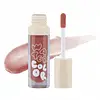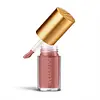What's inside
What's inside
 Key Ingredients
Key Ingredients

 Benefits
Benefits

 Concerns
Concerns

 Ingredients Side-by-side
Ingredients Side-by-side

Polybutene
Hydrogenated Polyisobutene
EmollientDiisostearyl Malate
EmollientOctyldodecanol
EmollientCera Alba
EmollientPhenyl Trimethicone
Skin ConditioningCyclopentasiloxane
EmollientDextrin Palmitate
EmulsifyingPentaerythrityl Tetraisostearate
EmollientPolyglyceryl-2 Triisostearate
EmulsifyingAscorbyl Tetraisopalmitate
AntioxidantCopernicia Cerifera Wax
Ethylhexyl Methoxycinnamate
UV AbsorberSynthetic Fluorphlogopite
Pyrus Malus Seed Oil
EmollientPhenoxyethanol
PreservativeEthylhexylglycerin
Skin ConditioningPolyhydroxystearic Acid
EmulsifyingTocopheryl Acetate
AntioxidantParfum
MaskingCyclotetrasiloxane
EmollientAluminum Hydroxide
EmollientTriethoxycaprylylsilane
Tocopherol
AntioxidantCI 77891
Cosmetic ColorantCI 77491
Cosmetic ColorantCI 77492
Cosmetic ColorantCI 77499
Cosmetic ColorantCI 15850
Cosmetic ColorantCI 45410
Cosmetic ColorantMica
Cosmetic ColorantPolybutene, Hydrogenated Polyisobutene, Diisostearyl Malate, Octyldodecanol, Cera Alba, Phenyl Trimethicone, Cyclopentasiloxane, Dextrin Palmitate, Pentaerythrityl Tetraisostearate, Polyglyceryl-2 Triisostearate, Ascorbyl Tetraisopalmitate, Copernicia Cerifera Wax, Ethylhexyl Methoxycinnamate, Synthetic Fluorphlogopite, Pyrus Malus Seed Oil, Phenoxyethanol, Ethylhexylglycerin, Polyhydroxystearic Acid, Tocopheryl Acetate, Parfum, Cyclotetrasiloxane, Aluminum Hydroxide, Triethoxycaprylylsilane, Tocopherol, CI 77891, CI 77491, CI 77492, CI 77499, CI 15850, CI 45410, Mica
Polybutene
Octyldodecanol
EmollientSilica
AbrasiveHydrogenated Polyisobutene
EmollientDiisostearyl Malate
EmollientPentaerythrityl Tetraisostearate
EmollientTriacontanyl Pvp
HumectantHelianthus Annuus Seed Oil
EmollientIrvingia Gabonensis Kernel Butter
Skin ConditioningEthylene/Propylene/Styrene Copolymer
Euterpe Oleracea Fruit Oil
Skin ConditioningHydrogenated Coco-Glycerides
EmollientTocopheryl Acetate
AntioxidantLecithin
EmollientButylene/Ethylene/Styrene Copolymer
Mica
Cosmetic ColorantTocopherol
AntioxidantPentaerythrityl Tetra-Di-T-Butyl Hydroxyhydrocinnamate
AntioxidantAscorbyl Palmitate
AntioxidantCitric Acid
BufferingCI 77891
Cosmetic ColorantIron Oxides
CI 42090
Cosmetic ColorantCI 77163
Cosmetic ColorantCI 19140
Cosmetic ColorantCI 77742
Cosmetic ColorantCI 15850
Cosmetic ColorantCI 15985
Cosmetic ColorantCI 45410
Cosmetic ColorantCI 73360
Cosmetic ColorantPolybutene, Octyldodecanol, Silica, Hydrogenated Polyisobutene, Diisostearyl Malate, Pentaerythrityl Tetraisostearate, Triacontanyl Pvp, Helianthus Annuus Seed Oil, Irvingia Gabonensis Kernel Butter, Ethylene/Propylene/Styrene Copolymer, Euterpe Oleracea Fruit Oil, Hydrogenated Coco-Glycerides, Tocopheryl Acetate, Lecithin, Butylene/Ethylene/Styrene Copolymer, Mica, Tocopherol, Pentaerythrityl Tetra-Di-T-Butyl Hydroxyhydrocinnamate, Ascorbyl Palmitate, Citric Acid, CI 77891, Iron Oxides, CI 42090, CI 77163, CI 19140, CI 77742, CI 15850, CI 15985, CI 45410, CI 73360
Ingredients Explained
These ingredients are found in both products.
Ingredients higher up in an ingredient list are typically present in a larger amount.
Ci 15850 is the pigment color red. It is an azo dye and created synthetically.
Azo dyes need to be thoroughly purified before use. This allows them to be more stable and longer-lasting.
This ingredient is common in foundations, lipsticks, and blushes. This color is described as brown/orangey red.
It has many secondary names such as Red 6 and Red 7. According to a manufacturer, Red 6 usually contains aluminum.
Learn more about CI 15850CI 45410 is a synthetic red-pigment and dye.
It often goes by both Red 28 or Red 27; manufacturers label both ingredients as CI 45410.
This dye is commonly found in makeup because it imparts a vivid color. Some types of this dye change color based on pH level and interaction with moisture:
Your skin has a natural pH of around 4.5 - 5.5.
According to the FDA, CI 45410 is not permitted for use in eye products.
Red 27 is a flourescein dye and commonly used as a fluorescent tracer in medicine.
Learn more about CI 45410Ci 77891 is a white pigment from Titanium dioxide. It is naturally found in minerals such as rutile and ilmenite.
It's main function is to add a white color to cosmetics. It can also be mixed with other colors to create different shades.
Ci 77891 is commonly found in sunscreens due to its ability to block UV rays.
Learn more about CI 77891Diisostearyl Malate is an emollient and most often used in lip products. It comes from isostearyl alcohol, a fatty acid, and malic acid, an AHA.
As an emollient, Diisostearyl Malate helps create a thin film on your skin to trap moisture in. This helps keep your skin soft and smooth.
Hydrogenated Polyisobutene is a synthetic polymer. Polymers are compounds with high molecular weight. Hydrogenated Polyisobutene is an emollient and texture enhancer.
In one study, Hydrogenated Polyisobutene showed better skin hydration levels than Caprylic/Capric Triglyceride. As an emollient, it helps keep your skin soft and hydrated by trapping moisture in.
Hydrogenated Polyisobutene is often used as a mineral oil replacement.
Learn more about Hydrogenated PolyisobuteneMica is a naturally occurring mineral used to add shimmer and color in cosmetics. It can also help improve the texture of a product or give it an opaque, white/silver color.
Serecite is the name for very fine but ragged grains of mica.
This ingredient is often coated with metal oxides like titanium dioxide. Trace amounts of heavy metals may be found in mica, but these metals are not harmful in our personal products.
Mica has been used since prehistoric times throughout the world. Ancient Egyptian, Indian, Greek, Roman, Aztec, and Chinese civilizations have used mica.
Learn more about MicaOctyldodecanol is a fatty alcohol. It is primarily used to enhance the texture of products.
As an emulsifier, Octyldodecanol helps prevent the oils and waters from separating. It also prevents ingredients from creating foam when shaken.
Octyldodecanol is created by reducing fatty acid to an alcohol.
Due to its high molecular weight, it does not get absorbed into the skin.
Learn more about OctyldodecanolPentaerythrityl Tetraisostearate is derived from isostearic acid. It is an emollient and emulsifier.
The highest concentration of this ingredient is found in lipsticks.
This ingredient is minimally water soluble and may not be Malassezia folliculitis, or fungal-acne safe.
Learn more about Pentaerythrityl TetraisostearatePolybutene is used to help control the viscosity of a product. This just means it helps adjusts the texture.
It is a polymer and does not get absorbed into the skin due to its large size.
Studies found this ingredient did not irritate skin in concentrations below 15%.
Learn more about PolybuteneTocopherol (also known as Vitamin E) is a common antioxidant used to help protect the skin from free-radicals and strengthen the skin barrier. It's also fat soluble - this means our skin is great at absorbing it.
Vitamin E also helps keep your natural skin lipids healthy. Your lipid skin barrier naturally consists of lipids, ceramides, and fatty acids. Vitamin E offers extra protection for your skin’s lipid barrier, keeping your skin healthy and nourished.
Another benefit is a bit of UV protection. Vitamin E helps reduce the damage caused by UVB rays. (It should not replace your sunscreen). Combining it with Vitamin C can decrease sunburned cells and hyperpigmentation after UV exposure.
You might have noticed Vitamin E + C often paired together. This is because it is great at stabilizing Vitamin C. Using the two together helps increase the effectiveness of both ingredients.
There are often claims that Vitamin E can reduce/prevent scarring, but these claims haven't been confirmed by scientific research.
Learn more about TocopherolTocopheryl Acetate is AKA Vitamin E. It is an antioxidant and protects your skin from free radicals. Free radicals damage the skin by breaking down collagen.
One study found using Tocopheryl Acetate with Vitamin C decreased the number of sunburned cells.
Tocopheryl Acetate is commonly found in both skincare and dietary supplements.
Learn more about Tocopheryl Acetate